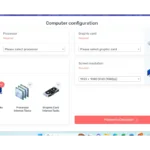Audio NFTs, or Non-Fungible Tokens related to sound, are revolutionizing the way we think about ownership and distribution in the music industry. By utilizing blockchain technology, each Audio NFT represents a unique piece of content such as a song, a podcast, or any other form of audible media. These tokens differ from traditional digital files. When someone buys an Audio NFT, they’re getting proof of ownership and the rights that come with it, which could include exclusive listening rights, revenue from resales, and more.
As the buzz around NFTs grows, so does the interest in Audio NFTs among artists, creators, and collectors. They provide a new avenue for creatives in the music space to monetize their work without intermediaries, allowing for more direct support from fans. Moreover, the immutable nature of blockchain ensures that the authenticity and scarcity of audio works are verifiable, which can potentially increase their value over time. For fans and collectors, owning an Audio NTF can mean possessing a piece of cultural history or supporting favorite artists in a meaningful way.
Music’s Digital Revolution
What are Audio NFTs?
Audio NFTs, or non-fungible tokens, are unique digital certificates stored on a blockchain that verify ownership and authenticity of a specific sound recording. Unlike traditional MP3s, which can be easily copied and shared, audio NFTs are one-of-a-kind, just like owning a physical piece of art.
How Audio NFTs Work
Audio NFTs are created (or “minted”) on a blockchain, typically Ethereum. The artist or creator uploads the audio file, along with any associated artwork or metadata, and then “mints” it into an NFT. This process creates a unique token that represents the ownership of that specific audio file.
What Can You Do with Audio NFTs?
Owning an audio NFT gives you certain rights, depending on the terms set by the creator. These might include:
- Ownership: You own the original digital file.
- Resale: You can sell the NFT on secondary markets.
- Exclusive Access: You might get access to unreleased tracks or special content.
- Royalties: Some NFTs even pay royalties to the owner whenever the audio is played or sold.
The Benefits of Audio NFTs for Artists
Audio NFTs offer a new way for musicians and creators to monetize their work directly, bypassing traditional music industry structures. They can sell their music as limited editions, offer exclusive experiences, and even earn royalties on resales.
The Impact on the Music Industry
Audio NFTs are disrupting the music industry by providing a new revenue stream for artists and creating a direct connection between creators and fans. They are also opening up new possibilities for artistic expression, as musicians can experiment with new formats and offer unique experiences to their audiences.
Table: Audio NFT Platforms
| Platform | Features | Target Audience |
|---|---|---|
| Royal | Music rights and royalties, collectible NFTs | Music fans and investors |
| Sound.xyz | Exclusive music releases, community focus | Music enthusiasts and collectors |
| Catalog | Limited edition releases, curated marketplace | Music lovers and collectors |
| Async Music | Interactive and generative music NFTs | Music fans and tech enthusiasts |
| OneOf | Eco-friendly NFTs, diverse music genres | Environmentally conscious music fans |
Key Takeaways
- Audio NFTs employ blockchain technology to create unique, verifiable ownership of audio files.
- They provide a new model for artists to monetize their music directly through blockchain.
- Collectors gain a new medium for digital ownership and opportunities to support artists.
Understanding Audio NFTs
Audio NFTs represent a new chapter in the music industry. They introduce an innovative way to claim ownership and share art using technology.
Evolution and Impact
Non-Fungible Tokens, or NFTs, have transformed the art world. Now, they are changing how music is owned and shared. In the past, music was mostly fungible—copies were identical and abundantly available. Audio NFTs bring scarcity and uniqueness to digital tracks. They benefit artists by offering a new way to connect with fans. This impacts the music industry by changing how art is valued.
Technical Framework
An NFT is a digital token on a blockchain. It shows that someone owns a unique digital item. Blockchain is like a digital ledger. It keeps records very secure. When an artist mints an audio NFT, they create a new, unique token. This process involves smart contracts. These contracts are like automatic rules that say what can happen with the NFT. Ethereum is a common blockchain for this. It allows artists to set terms for royalties. This empowers them to earn money when their NFTs are sold again.
Marketplaces and Platforms
To buy or sell an audio NFT, you need a marketplace that supports these transactions. OpenSea and Foundation are popular NFT marketplaces. They are part of the Web3 movement, which is all about a new, decentralized web. Buyers need a digital wallet like Metamask to interact on these platforms. They also need cryptocurrency, usually Ether, to pay for the NFTs and cover gas fees—the cost of doing transactions on the blockchain. These platforms provide artists with a space to share their music as NFTs and fans with a method to support their favorite artists directly.







